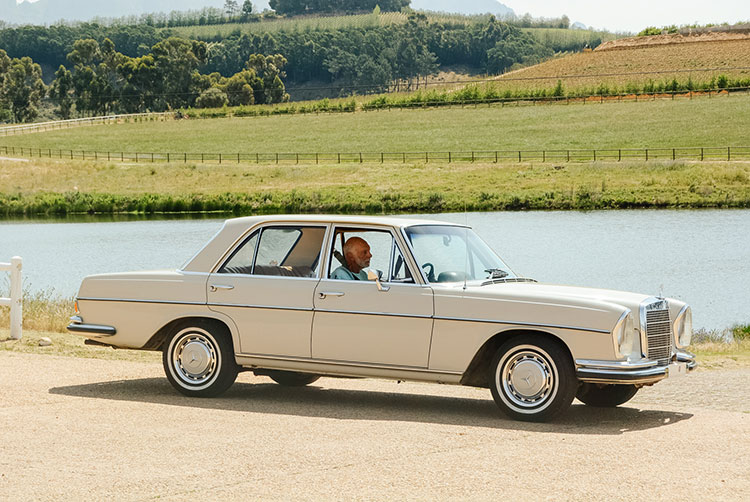
28 Feb Collection In Action: Mercedes Benz 280SE
Mike Monk drives a rare, early example of one of Mercedes’ classy S-Class model ranges than, amazingly, was introduced over 50 years old…
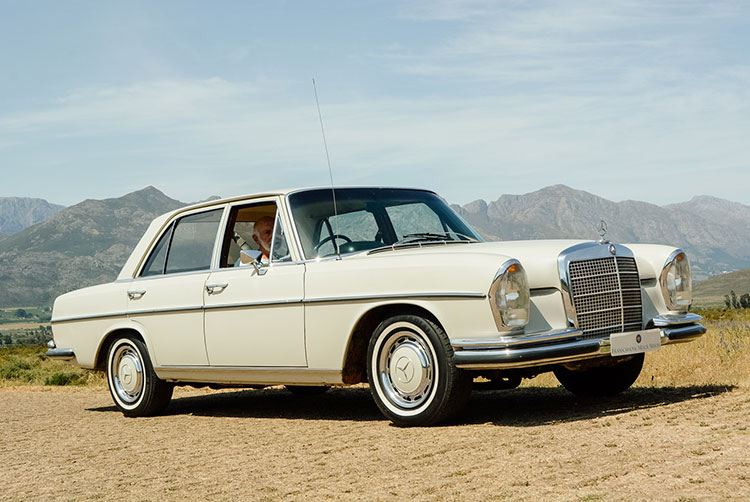

Launched at the 1965 Frankfurt Motor Show in what became a Mercedes-Benz trend, the W108 Series Mercedes-Benz raised the bar in terms of mass-production luxury saloons, not only in-house but for the motor industry in general. It was essentially an upgrade of the distinctive W111 ‘Fintail’ Mercedes, and design of the new model began in 1961 under the leadership of Paul Bracq, who was the company’s head of design from 1957 to 1967. Visibly, the W108 had a lower waistline that helped increase the glasshouse – the windscreen alone was 17% bigger – a 60 mm lower ride height and 15 mm wider doors. And whereas the W111 had subtle Heckflosse on the rear fenders as a styling feature, the W108 boasted vertically-stacked dual quartz-halogen headlights as its distinctive characteristic. The distinguishing Mercedes grille began its steady transition from the long-running upright shape into one that was lower and wider.
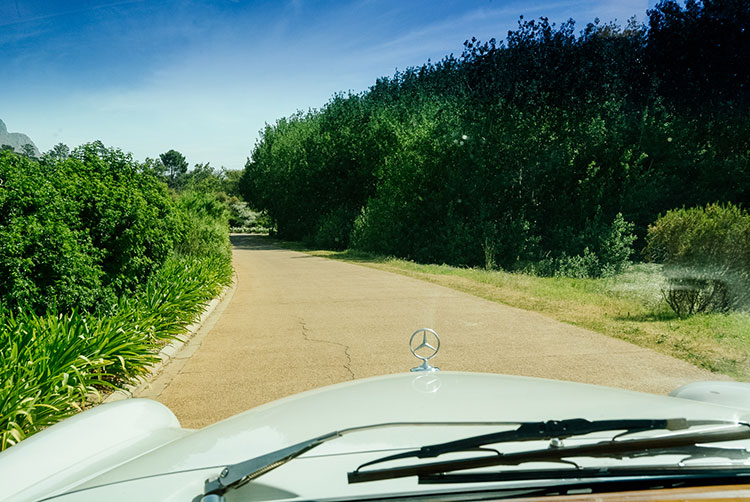
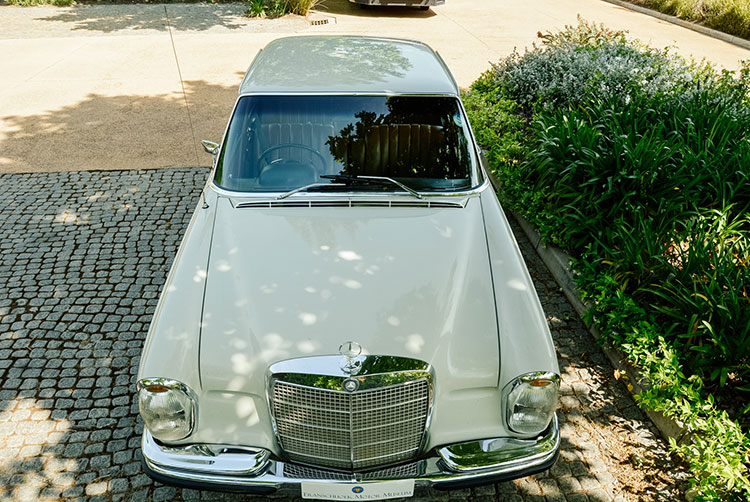
The initial model line-up consisted of 250S, 250SE and 300SE. (There was also a longer- wheelbase 300SEL model, Series W109, which heralded all future S-Class models having an LWB derivative.) In November 1967 the three W108 models were replaced with the 280S and 280SE and were known as the ‘stroke 8’ models –identified on the body plate as ‘/8’. Both were powered by the M130 2 778 cm3 six-cylinder single overhead-cam engine. However, the 280S was fuelled by two twin-barrel Zenith carburettors and with a 9,0:1 compression ratio developed 103 kW at 4 200 r/min along with 223 N.m of torque at 3 600, whereas the SE’s fuel-injected version delivered 118 kW at 5 500 and 240 N.m at 4 250.
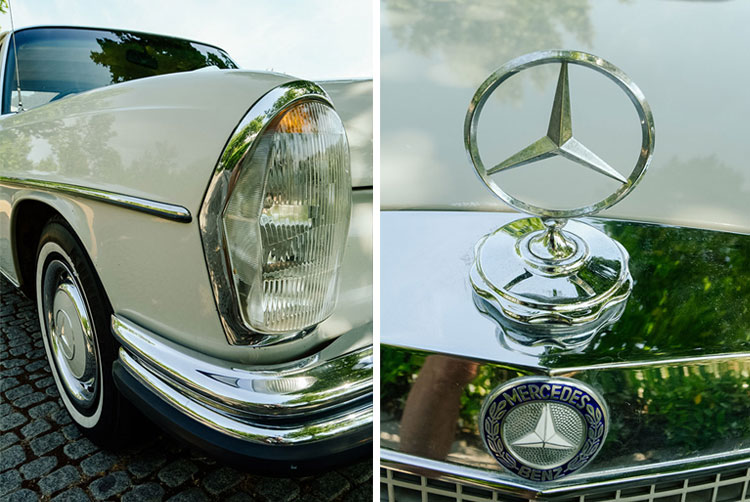
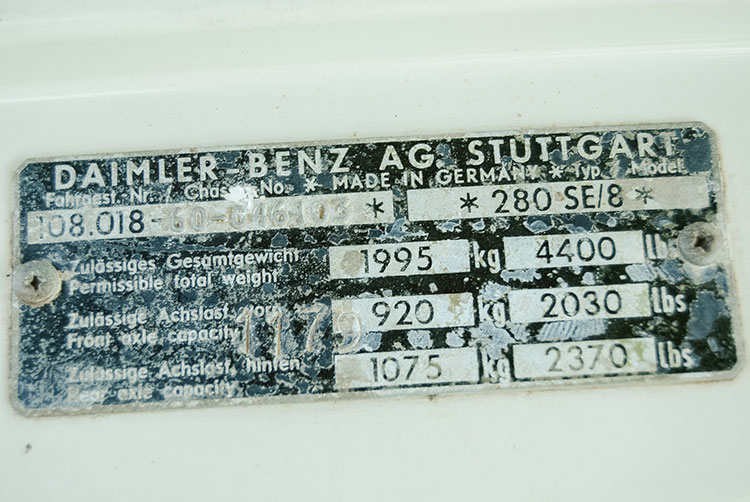
The standard transmission for Europe was a four-speed manual with the option of a four-speed automatic that, unusual for a mainstream European manufacturer of the time, was developed and built in-house. Taking into account such factors as weight and gearing, the different power and torque differences gave the 280S a top speed of 185 km/h and the 280SE 193 km/h, but for both models the 0-100 km/h time was around 10,5 seconds. Claimed overall fuel economy was given as 10,5 litres/100 km.
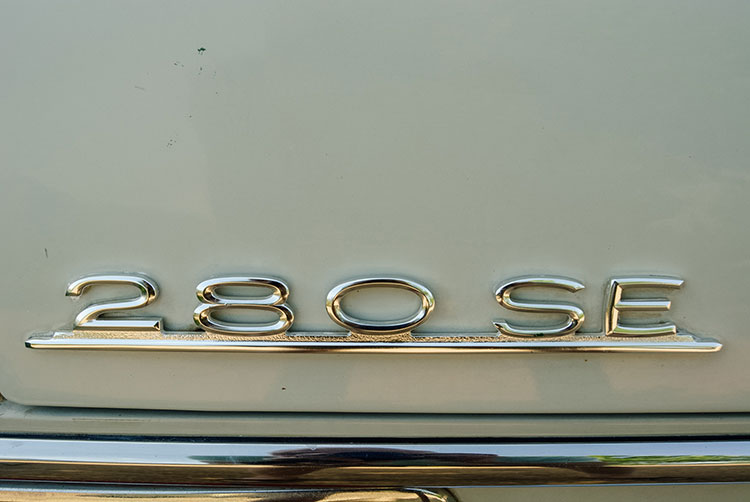
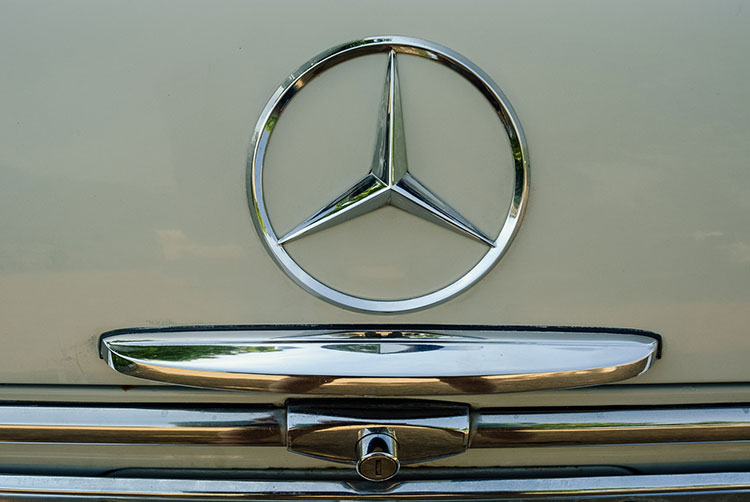
While many engineering principles were carried over from previous models, the W108’s suspension system incorporated a reinforced low-pivot swing axle with a hydropneumatic compensating spring at the back, and double wishbones, coil springs and a stabiliser bar up front. Dual hydraulic power-assisted disc brakes with anti-dive control were fitted all round, and wheels were 14-inchx6J shod with 185HR tyres. Recirculating ball steering was offered with or without servo assistance. With an overall length of 4,9 metres and a wheelbase of 2,75 metres, the turning circle was a relatively modest 10,8 metres.
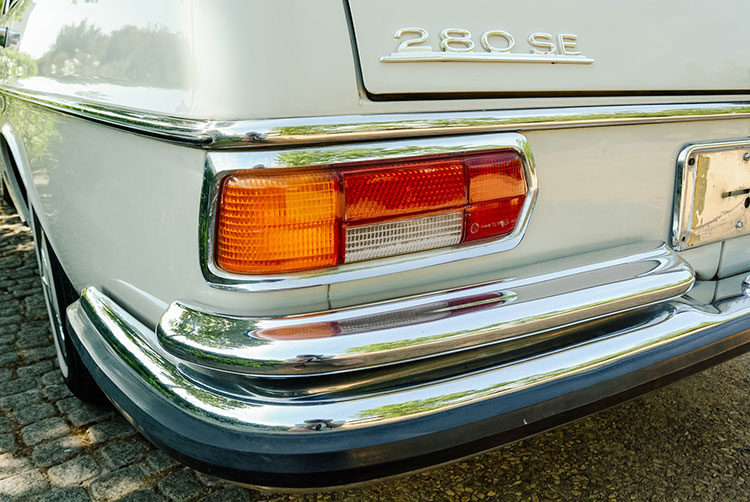
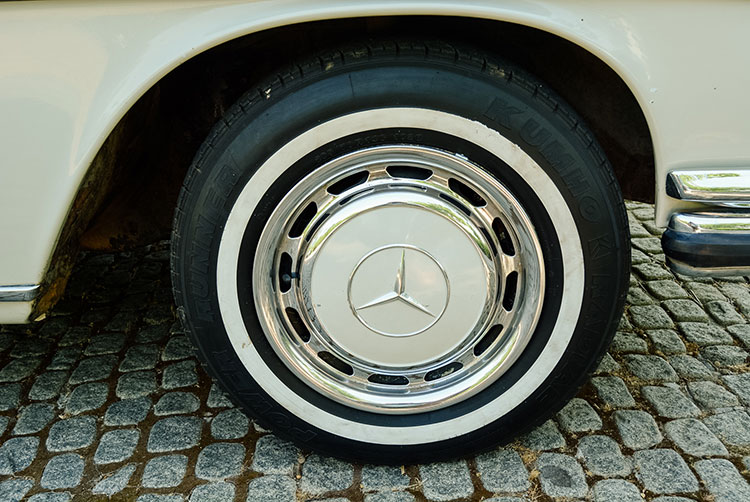
The W108 arrived in South Africa in late-1968, by which time the model range had been enlarged with the addition of 220, 220D and 230 derivatives. At a time when the automotive world was reeling from Ralph Nader’s book Unsafe At Any Speed, Mercedes-Benz was already well into safety research and the W108’s body shell had a very rigid passenger compartment with front and rear sections designed as crumple zones in the event of an accident. Inside, the energy absorbing facia held controls and switches, the steering column was telescopic with an impact damper mounted under the steering wheel. Three-point seatbelts for the front seats were already established.
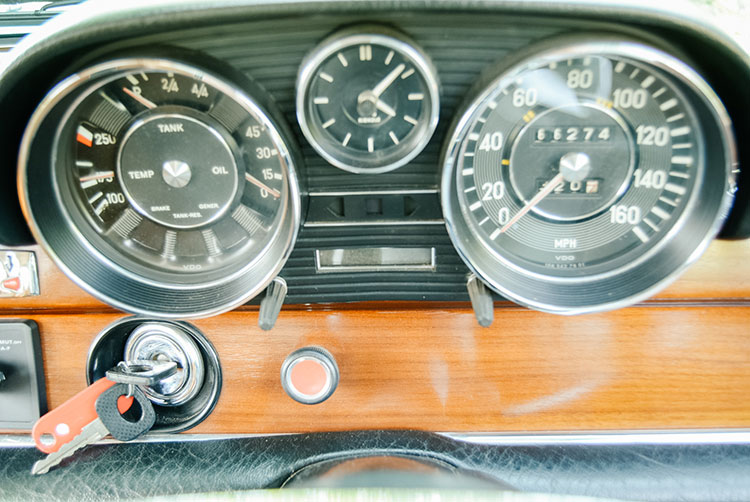
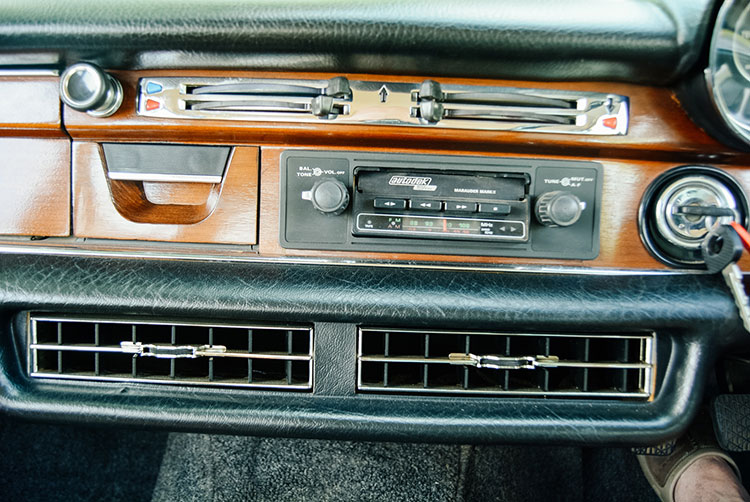 FMM’s
FMM’s
280SE (body number 133546) is listed as a 1968 model, which suggests it must have been one of the first to be sold in the country. It was assembled by Car Distributors Assembly (CDA) in East London, which in 1958 had become a contract manufacturer of Daimler-Benz AG. In 1984, Daimler-Benz AG took over 50,1% of CDA’s shares, and since 1998 Mercedes-Benz South Africa is a wholly‑owned subsidiary of Daimler.
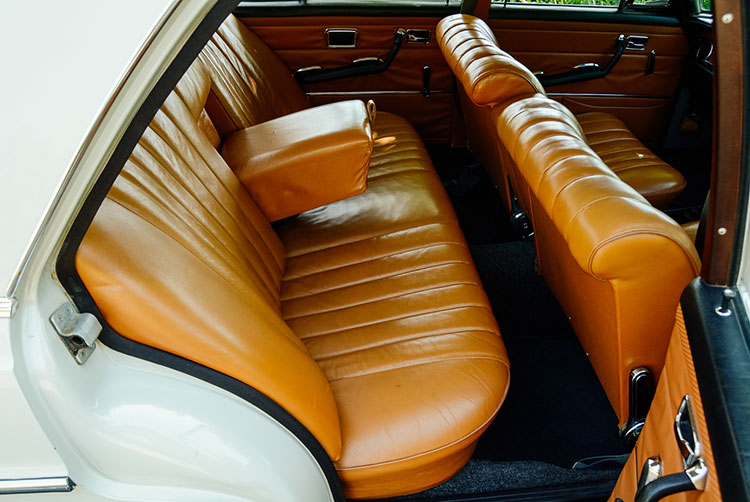
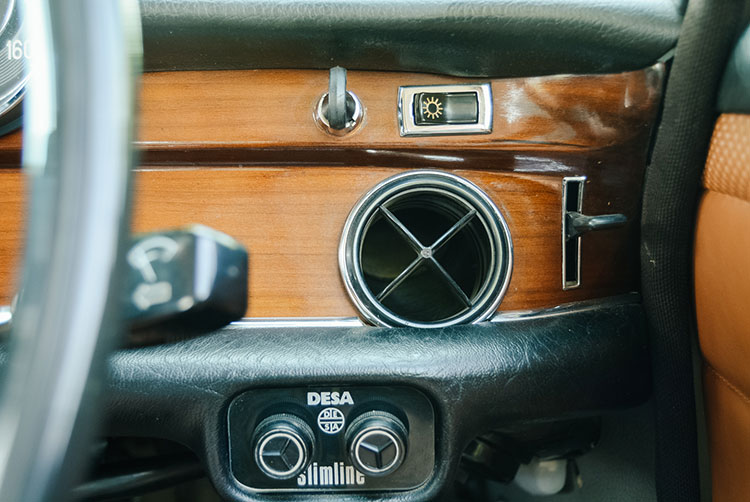
Painted in familiar beige, and still with ‘as supplied when new’ white-wall tyres, this 280SE has that instantly recognisable period Mercedes-Benz ‘look’. There is nothing flash about it; a classic three-box shape with slim pillars, full-length bodyside mouldings with practical rubber inserts to prevent damage from carelessly opened doors. The tan-coloured seats have plenty of adjustment and both front chairs have adjustable backrests via a rotating knob and inboard folding armrests. The three-seat rear bench also has a substantial foldaway centre armrest.
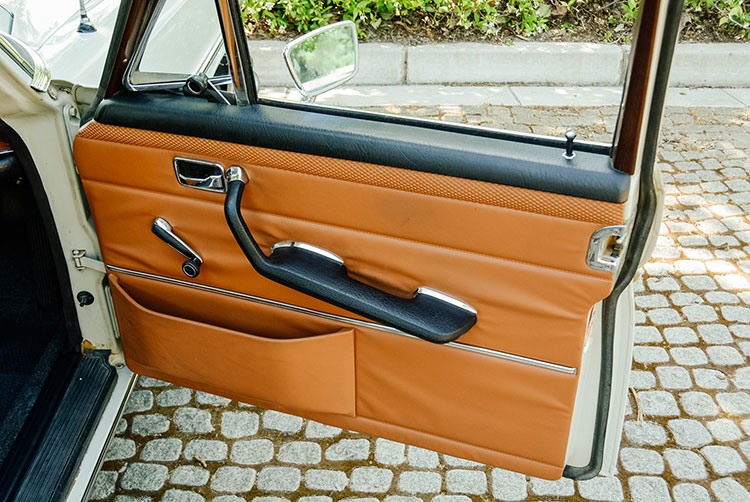
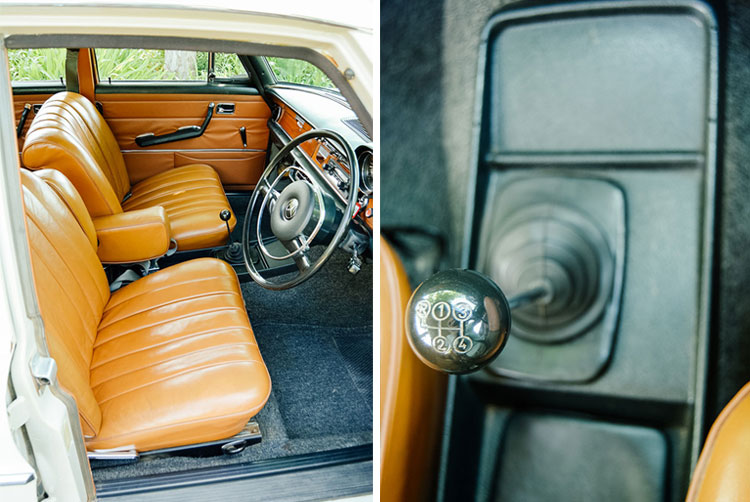
Fresh from a recent mechanical overhaul, the engine fires up and settles into an easy idle. With a dry weight of 1 560 kg, there is ample power and torque to propel the 280SE along, in this case with a rare twist – it is equipped with a manual gearbox, a rarity amongst the bigger Mercedes models, which also suggests it is an early example. In the many years of working for CAR magazine and road-testing all manner of Mercedes-Benzes, I never grew fond of the M-B manual gearbox, principally because the shift felt somehow non-involving. So I was pleasantly surprised to find this 280SE’s four-on-the-floor actually gave off all the right vibes as it engaged each chosen ratio.
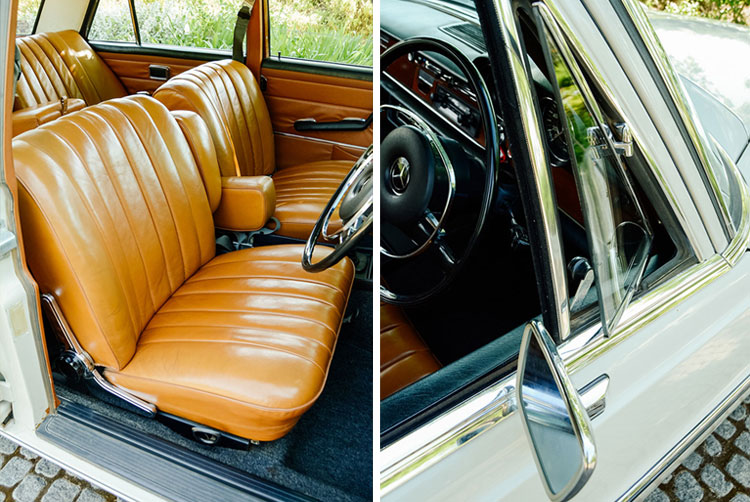
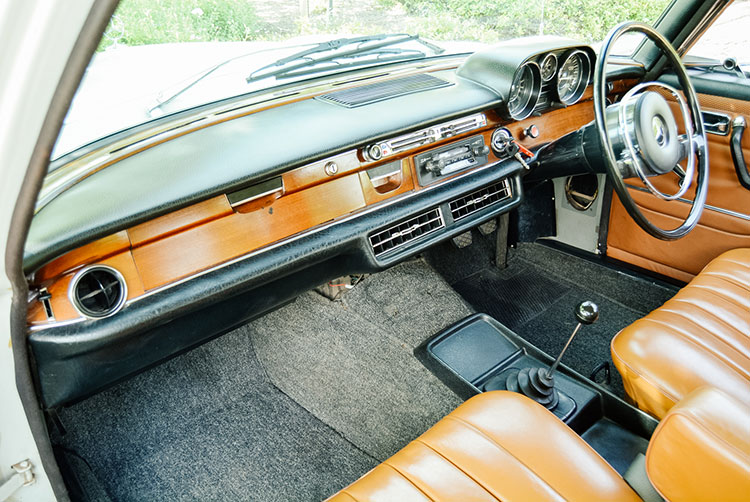
It did not take long to feel completely at home in this car. In such a light and airy cabin residing in seats that are typically Teutonic firm yet surprisingly comfortable, the smooth-running six just bowled the car along with ease – and in relatively refined silence. Back in the 1970s, I shared a view with my journalistic colleagues that if you were told off the cuff to get in a car and drive from Cape Town to Johannesburg – now! – a Mercedes would be the chariot of choice. Ride quality borders on being stiff but, once more, overall it is a comfortable experience.
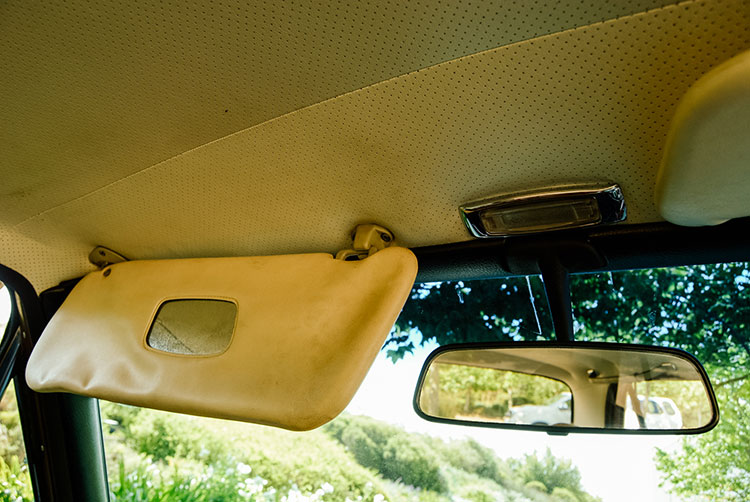

The rear suspension layout famously allows for noticeable wheel camber changes, but in deference to the car’s age and ‘old’ tyres I had no intention of provoking some hard cornering that would cause the inside wheel to lift. The drive was all about ease and enjoyment.
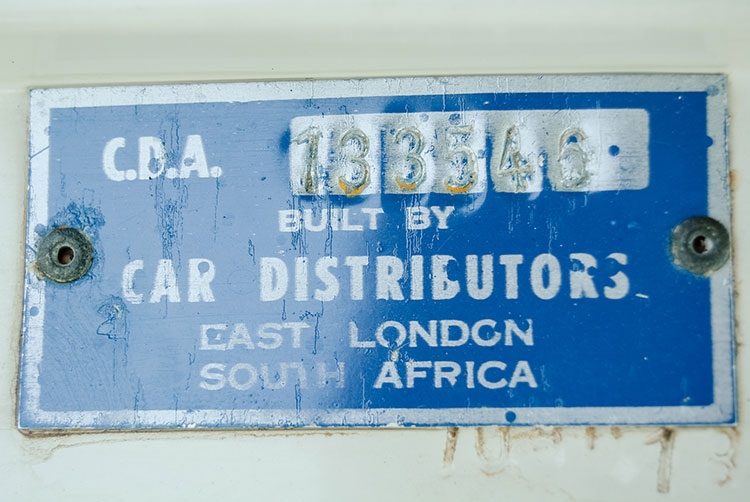
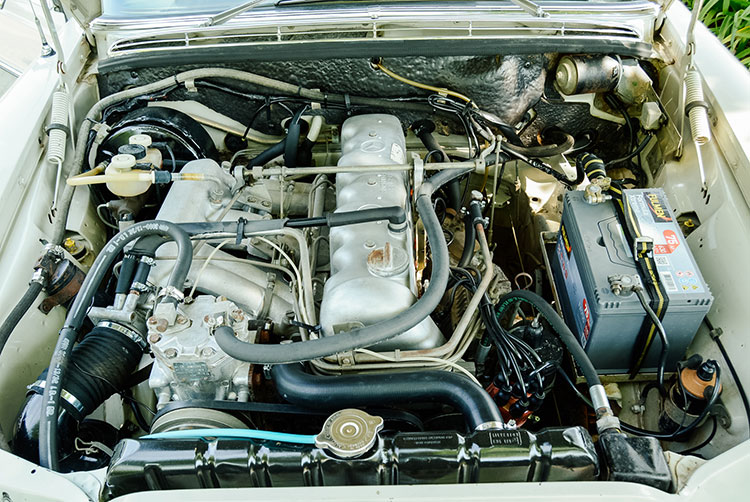
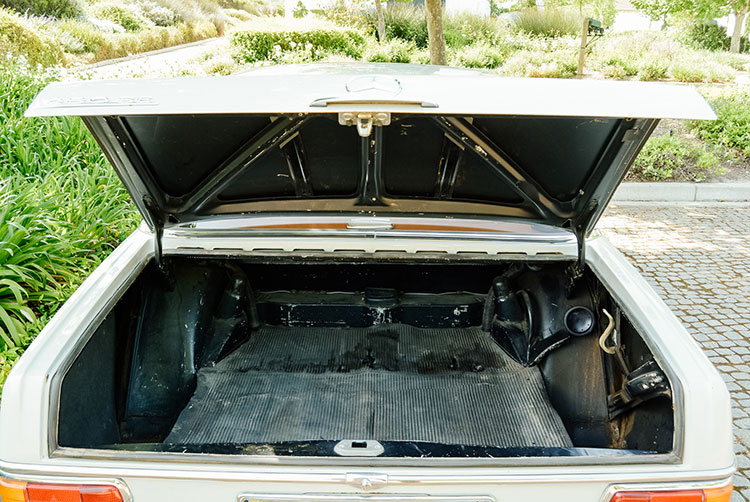
Although many critics described the car as a ‘fintail without the fintails’, the vehicle was an amazing success. Throughout the W108’s production life from 1965 to 1972 when a total of 359 522 were built, the 280SE was second only to the 280S in sales – 91 051 versus 93 666. The car’s simple and square contours provided ample engine, passenger and boot space and the design has a timeless quality. But the W108 is perhaps better known for its reliability and durability, as proof of excellent and long-lasting Mercedes-Benz engineering.



